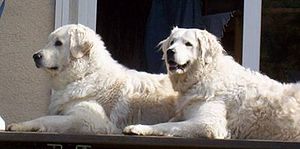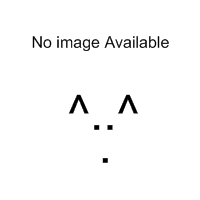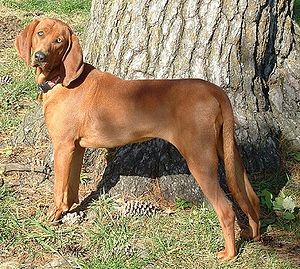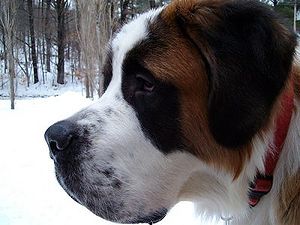 |
| Vital Statistics: |
| Place of Origin: Hungary |
| Group: Working dog, Guard dog (livestock) |
| Height: males 28-30 in., females 26-28 in. |
| Weight: males 100-120 lbs., females 75-100 lbs. |
| Life span: 10-12 yrs. |
| Trainability: moderate |
| Good with children: with family children, take care with strange children |
| Good with other pets: may be male dog aggressive, take care with other pets |
Where did the Kuvasz originate?
Interesting tales surround the Kuvasz. Some insist the Kuvasz was known since the time of the Huns. Others say it accompanied Turkish refugees fleeing from the Mongols into Hungary in 1200. In the 15th century, an Hungarian King claimed to trust only the Kuvasz. When he died, the Kuvasz returned to its original job of guarding livestock.
What does the Kuvasz look like?
Its muscular body is longer than it is tall. Height is 28-30 inches and weight 100-120 lbs. with females being slightly smaller. Mouth and lips are black. Eyes are oval and dark brown. Ears are folded and held close to the head. The tail is carried low except when the dog is excited. The coat is short on the head and feet but can be 4-6 inches long on the body. The undercoat is dense. Colors are white or ivory.
What is the temperament of the Kuvasz?
The Kuvasz has very strong protective instincts. It is an intelligent and fearless dog and learns quickly. Early training and socialization are very important, but be aware that the Kuvasz is sensitive and can be stubborn. It needs a firm but kind hand in training. The Kuvasz may not respond well to other pets. While the Kuvasz bonds closely with its own family members, it may not be as dependable with other adults and children. Early introduction to livestock will help train the Kuvasz to be a good shepherd. The Kuvasz needs vigorous, long walks daily.
What is the Kuvasz used for?
The Kuvasz is used as a guard for livestock. It is also an excellent guard dog for people and property. With the right owner it is a faithful companion dog.
Possible Health Issues
Hip dysplasia, osteochondritis dissecans, hypothyroidism, pansteitis, hypertrophic osteodystrophy (inflammation of the front limb bones of large breed puppies).
- Akbash Dog
- Alaskan Malamute
- Anatolian Shepherd Dog
- Appenzell Mountain Dog
- Belgian Malinois
- Boxer
- Burnese Mountain Dog
- Canaan Dog
- Chinook
- Deutscher (German) Pinscher
- Doberman Pinscher
- Dogue de Bordeaux
- Estrela Mountain Dog
- German Spitz (Giant, Standard, Toy)
- Giant Schnauzer
- Great Dane
- Greater Swiss Mountain Dog
- Greenland
- Irish Red & White Setter
- Kai Ken
- Korean Jindo Dog
- Laika
- Leonberger
- Newfoundland
- Norwegian Elkhound
- Rat Terrier
- Rottweiler
- Saint Bernard
- Samoyed
- Siberian Husky
- Standard Schnauzer
- Tibetan Mastiff
- Akbash Dog
- Anatolian Shepherd Dog
- Black Russian Terrier
- Boerboel
- Bullmastiff
- Burnese Mountain Dog
- Ca de Bou
- Cane Corso
- Chinese Shar-Pei
- Chow Chow
- Estrela Mountain Dog
- Fila Brasileiro
- Giant Schnauzer
- Great Pyrenees
- Hokkaido Dog
- Kai Ken Dog
- Kangal Dog
- Karelian Bear Dog
- Kerry Blue Terrier
- Komondor
- Mastiff
- Neapolitan Mastiff
- Norwegian Elkhound
- Presa Canario
- Pyrenean Mastiff
- Rafeiro do Alentejo
- Rhodesian Ridgeback
- Rottweiler
- Sanshu
- Shikoku Inu
- Tibetan Mastiff
- Tosa Ken



